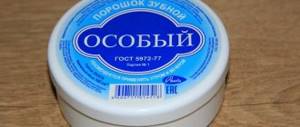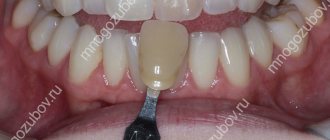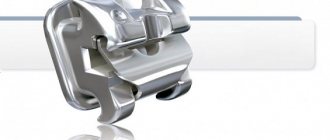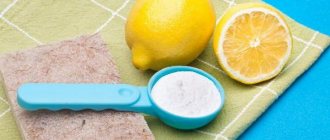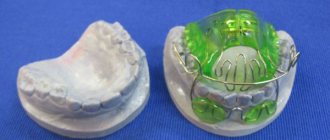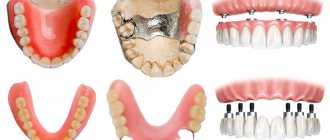Home | How to properly care for your mouth guards
An aligner is a removable orthodontic device, which is made from individual impressions of the patient’s teeth from a flexible material, designed to correct malocclusion.
Aligners are a more aesthetic alternative to traditional braces. They are completely invisible to others, which allows you to undergo treatment in an atmosphere of psychological comfort. With the help of aligners, small defects can be eliminated without resorting to the use of noticeable metal systems.
Types of plates for teeth
There are two types of bite correction plates:
- Non-removable - fixed on the outer surface of the teeth. Their design includes a system of locks, through each of which a steel arc is threaded. The latter, restoring its original shape, sets the teeth in the required direction of movement. The time it takes to correct teeth with a non-removable plate is about two years, and the treatment method itself can be used for both children and adults;
- Removable ones have a simpler design compared to non-removable ones. They are made from plastics that are non-toxic to the human body. They are fixed to the teeth using metal hooks. In addition, their design may include auxiliary screws and springs. Removable teeth straightening plates can be removed while eating or brushing your teeth. The period of wearing them varies from one and a half to two years and is determined by the doctor.
Fixed dental plates, the price of which is significantly higher than their removable counterparts, are rightfully considered more effective. The choice of type depends on the complexity of the case.
In addition, classification is carried out based on the purpose of application. The types of plates are presented in the table below:
| Type of plates | What is it used for? | Peculiarities |
| Mechanical | Optimal for correcting crooked teeth and helping to straighten them. | They have clasps, arches and screws made of metal. |
| Equipped with a hand-shaped process | Allows you to correct an individual tooth. | The design is such that it allows you to apply pressure to one specific tooth. |
| Functional | They stimulate the development of the jaw and chewing muscles, allow you to restore facial muscles and even correct the shape of the face due to the restructuring of the dentition and the regulation of the temporomandibular joints. | Requires wearing for 14 hours a day. They fix the jaw in one position and are complex structures, when worn, the child cannot eat or speak. |
| Single jawed | Used to correct anomalies of individual teeth on one jaw. | The design includes special screws |
| Vestibular | They allow you to remove the soft tissue that has formed between the teeth by moving it away. | They are placed between the teeth and lips or between the teeth and cheek, depending on the location of the abnormal area. |
| With retraction type arc | Effective in straightening front teeth. | The plate is installed in such a way that it covers the teeth from the outside. |
| With arc with active pusher | Used to correct the palatal position of the upper teeth. | The arc has a base made of hypoallergenic plastic and a spring. |
Hygiene products for cleaning implants, crowns, dental bridges
To clean fixed dentures you will need the following hygiene products:
. The cleaning brush should have an appropriate degree of bristles so as not to scratch the denture or wear it off. In addition to the main one, you will need a special mono-beam, narrow and thin - for cleaning interdental spaces and difficult places that are inaccessible to a regular brush. It is used after basic brushing; toothpaste is not required for such a cheek.
Toothbrush- Toothpaste . Dentists do not have any special requirements for the paste; you can use a regular one that is suitable for your situation. It is worth noting that whitening pastes or enamel strengthening pastes will not be as effective if you have a lot of fillings, crowns or implants in your mouth. When choosing, dentists recommend giving preference to pastes that have an effect not on the teeth, but on the gums. If you have gum disease or increased plaque formation, you can use pastes with antiseptic properties or herbal extracts.
- Floss . Cleaning the dentures in the area adjacent to the gums is an extremely important step in cleaning. Dental floss will help cope with plaque; for this, there are two types of floss - flat for narrow spaces between teeth, round for wider areas. It is advisable to floss after every meal to remove food particles that get stuck while eating.
- Irrigators and rinses . The irrigator effectively removes bacteria not only from teeth and gums, but also from the tongue. The irrigator can be refilled with both plain water and rinse aid, but it cannot be used during exacerbation of chronic oral diseases. Rinses are prescribed by the dentist if necessary. Consult your doctor before use, especially if you decide to purchase a product with antiseptic or antibacterial properties. Rinsers and irrigators cannot replace full hygiene with a brush and dental floss, so use them after basic procedures.
Caring for fixed dentures is important throughout their lifespan. Careful care of implants and crowns extends their service life, in some cases up to several decades. It is important to remember that in addition to home care, it is necessary to undergo regular preventive examinations, have professional cleaning, and protect dentures from chips, cracks and scratches. At the “Royal Smile” dentistry, after installing implants, crowns or dental bridges, you will receive all the recommendations for caring for them, as well as choosing a brush, paste and additional hygiene products.
Dental plates for children
Having looked at the photos before and after wearing dental plates on children’s teeth, you will conclude that they are very effective - and you will be right. With the right approach, they can be called the best way to correct a number of malocclusions. Their use is advisable under the age of 12 years during active jaw growth. To correct serious anomalies, non-removable structures are used. If there is a slight curvature or prevention is required, removable plates are ideal. As already mentioned, the production of plates is carried out on an individual basis and requires taking impressions and making plaster models. It is very important that the surface relief of the gums and palate coincide exactly. To do this, a special adjustment is carried out, which takes no more than 10 minutes.
Are there any difficulties?
According to reviews, dental plates are effective, but in the case of children there is one problem. It lies in the fact that you need to wear them at least 22 hours a day for 12 to 18 months. This does not always please young patients who are not delighted with the presence of a structure on their teeth, which requires getting used to and which may cause teeth pain at first.
It is important to explain to the child that plates are much less noticeable than braces, which will have to be worn if the plate does not give the desired effect... And to achieve the effect, you need to use it correctly. It is better to undergo a much simpler course of treatment now than to resort to much more complex treatment in adolescence - especially since the result will be obvious! The child needs to be taught:
- Wear the plate in the morning;
- Remove the plate to brush your teeth before going to bed;
- Do not remove the system during the day;
- Tighten the structure screw in a timely manner.
Manufacturing and design features
Making plates to correct a bite is not an easy process, requiring a preliminary x-ray examination of the dentition. In addition, it is preceded by taking impressions and making control models. By conducting a preliminary assessment using them, the orthodontist decides how accurate the model is and whether it is suitable for the patient. If necessary, correction and re-fitting are carried out.
Plastic is used to make the base of the plate. The shape of the base exactly repeats the relief of the dental contour and gum surface. The base itself is durable and moderately rigid. The arc of the plate is made of steel wire and has hooks that are fixed on the cutters. As the position of the teeth changes and the jaw grows (when it comes to a child), the system is corrected.
Benefits of orthodontic plates
Although bite plates are only effective for minor malocclusions, they have a number of other benefits:
- Convenient to use. The design of the plates allows you to easily and quickly remove them while eating or brushing your teeth;
- Prompt production. The average production time for plates is from 2 to 4 weeks. At the same time, a removable type structure is manufactured faster than a non-removable one;
- Affordable price. The average price of a plate for correcting a bite is 2 times lower than the price of inexpensive braces.
Reviews
Today, the popularity of tooth powder is undeservedly low. In fact, this product is unique both for cleaning teeth and for fixing removable structures.
You can share your experience of using the powder to secure or process an orthopedic structure, and express your opinion about this product by leaving a comment on this article.
If you find an error, please select a piece of text and press Ctrl+Enter.
Tags: tooth powder, denture care
Did you like the article? stay tuned
No comments yet
What are the disadvantages of dental plates?
The use of records has a number of limitations. First of all, they are due to the fact that the functionality of the plates does not allow them to move teeth. It only makes it possible to hold them in a certain position, which does not allow them to be used to correct serious anomalies. At the same time, it is worth noting that often the reason for the insufficient effectiveness of treatment is a reduction in the time of wearing the structure. As for other disadvantages, these include:
- the need for long-term use;
- a number of uncomfortable sensations during adaptation;
- minimal pressure compared to braces;
- age restrictions for use;
- the need for constant monitoring by parents (in the case of children).
Selection rules
The choice of powder for a prosthesis must be approached correctly. In order not to make a mistake with your choice, you should know some subtleties:
- Study the composition carefully. You should not buy powder if it contains synthetic components.
- It is better to buy a product with a neutral scent or without it. Many fragrances and oils can cause allergies.
- Check the tightness (integrity) of the packaging. If it has been damaged, the powder may change its properties and be less effective.
Installation of plates
Installing the plates is a fairly quick, painless process that takes no more than 10 minutes. Most of the time is spent on final adjustment of the system. That is why the first installation of removable plates is carried out in the presence of the attending physician. The doctor will give detailed instructions on the rules for its use, care and how to properly regulate the tension of the arc. The first correction is carried out after the appearance of a visible result - it is this that determines the subsequent course of treatment and its duration. It is important to understand that at first the plate will be perceived as a foreign body in the mouth, which can cause discomfort, impaired diction and increased salivation. The adjustment period averages up to one week; after this the structure ceases to be felt.
How to care for the plates?
In order for the plate to serve the required time and not break, it is necessary to provide it with appropriate care. It is as follows:
- brushing with toothpaste every day;
- disinfection every week;
- storage in a special container, closed;
- oiling the screw;
- removing the plate while eating, brushing teeth, practicing martial arts, boxing and water sports.
Do you dream of beautiful teeth? Contact the orthodontists of the multidisciplinary clinic CELT!
Folk remedies
To clean the prosthesis, you can use folk remedies that have been proven over the years. They will cope perfectly with contamination if there are no special preparations or other cleaning compounds at home.
An orthopedic product can be processed in the following ways:
- Take equal volumes of acetic acid and water , mix the liquids, and immerse the prosthesis in the solution overnight.
In the morning, rinse the product well with warm (not hot!) water and brush with toothpaste. This method will help eliminate bacteria from the surface of the structure, but it is not recommended to use it often. It is enough to carry out this treatment once a month. - Citric acid or lemon will help lighten the artificial units and kill bacterial deposits.
To do this, squeeze the juice from 1/4 of the citrus into powder and apply the mixture to the structure, leaving it for 15-20 minutes. After this time, it must be washed with water and treated with a brush. - If the regular rinse aid is diluted a little with water (lemon juice), then the orthopedic product can be immersed in the mixture overnight.
- Brushing with baking soda will help keep false teeth white or remove stains. The alkaline environment of the composition reduces the ability of bacteria to reproduce.
Important! It is not recommended to use hydrogen peroxide to clean the denture. The product can damage the structure with its aggressive action.
